
24 HOUR HELP LINE
24 HOUR HELP LINE
(800) 818-6493
"With Respect
and Compassion"
24 HOUR HELP LINE
(800) 818-6493
"With Respect
and Compassion"
AAA
HOARDING & BIOHAZARD REMOVAL
HOARDING & BIOHAZARD REMOVAL
SERVICES
CONTACT
MEDIA
ADVOCACY
BIOHAZARD
SERVICES
HOME

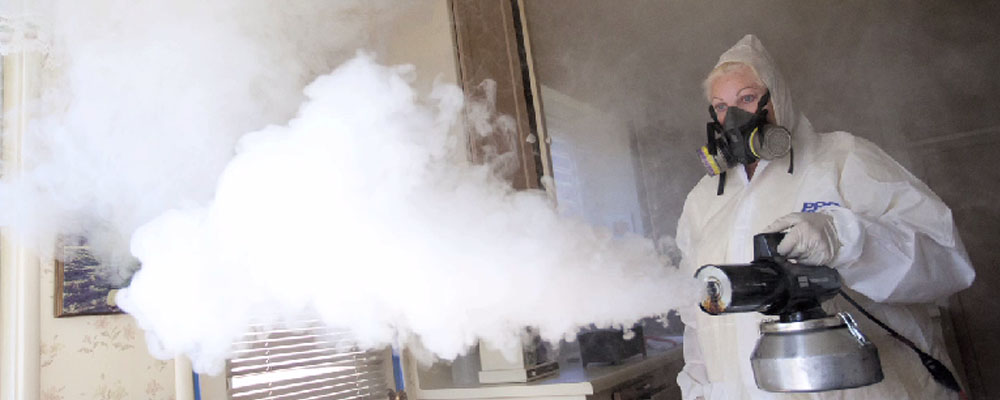


AAA
HOARDING & BIOHAZARD REMOVAL
HOARDING & BIOHAZARD REMOVAL
AAA
HOARDING & BIOHAZARD
REMOVAL
HOARDING & BIOHAZARD
REMOVAL
24 HOUR HELP LINE
24 HOUR HELP LINE
(800) 818-6493
"With Respect
and Compassion"
24 HOUR HELP LINE
(800) 818-6493
"With Respect
and Compassion"
UNDERSTANDING
HOARDING
HOARDING
ABOUT US
RESOURCES
AAA CRIME SCENE
CLEAN UP
CLEAN UP
"With Respect and Compassion"
HOME
Biohazard
Bloodborne Pathogens
AAA Hoarding & Biohazard Clean upl teams will remove and dispose of bodily fluids, tissue and other potentially pathogenic substances resulting from accident, trauma, crime or death. Trained AAA Hoarding & Biohazard Cleanup professionals clean, disinfect and deodorize the home
Bloodborne Pathogens
AAA Hoarding & Biohazard Clean upl teams will remove and dispose of bodily fluids, tissue and other potentially pathogenic substances resulting from accident, trauma, crime or death. Trained AAA Hoarding & Biohazard Cleanup professionals clean, disinfect and deodorize the home
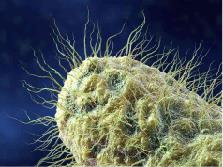
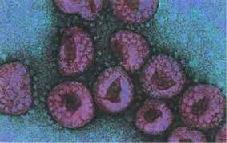
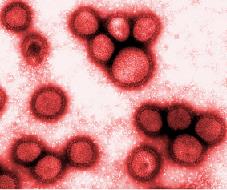
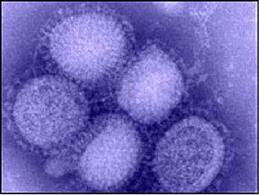
Biohazard Details
Biosafety level
The United States Centers for Disease Control and Prevention (CDC) categorizes various diseases in levels of biohazard, Level 1 being minimum risk and Level 4 being extreme risk. Laboratories and other facilities are categorized as BSL (Biosafety Level) 1-4 or as P1 through P4 for short (Pathogen or Protection Level).
Biohazard Level 1: Bacteria and viruses including Bacillus subtilis, canine hepatitis, Escherichia coli, varicella (chicken pox), as well as some cell cultures and non-infectious bacteria. At this level precautions against the biohazardous materials in question are minimal, most likely involving gloves and some sort of facial protection.
Biohazard Level 2: Bacteria and viruses that cause only mild disease to humans, or are difficult to contract via aerosol in a lab setting, such as hepatitis A, B, and C, influenza A, Lyme disease, salmonella, mumps, measles, scrapie, dengue fever. "Routine diagnostic work with clinical specimens can be done safely at Biosafety Level 2, using Biosafety Level 2 practices and procedures. Research work (including co-cultivation, virus replication studies, or manipulations involving concentrated virus) can be done in a BSL-2 (P2) facility, using BSL-3 practices and procedures.
Biohazard Level 3: Bacteria and viruses that can cause severe to fatal disease in humans, but for which vaccines or other treatments exist, such as anthrax, West Nile virus, Venezuelan equine encephalitis, SARS virus, tuberculosis, typhus, Rift Valley fever, HIV, Rocky Mountain spotted fever, yellow fever, and malaria. Among parasites Plasmodium falciparum, which causes Malaria, and Trypanosoma cruzi, which causes trypanosomiasis, also come under this level.
Biohazard Level 4: Viruses and bacteria that cause severe to fatal disease in humans, and for which vaccines or other treatments are not available, such as Bolivian and Argentine hemorrhagic fevers, Marburg virus, Ebola virus, hantaviruses, Lassa fever virus, Crimean-Congo hemorrhagic fever, and other hemorrhagic diseases. Variola virus (smallpox) is an agent that is worked with at BSL-4 despite the existence of a vaccine. When dealing with biological hazards at this level the use of a positive pressure personnel suit, with a segregated air supply, is mandatory. The entrance and exit of a Level Four biolab will contain multiple showers, a vacuum room, an ultraviolet light room, autonomous detection system, and other safety precautions designed to destroy all traces of the biohazard. Multiple airlocks are employed and are electronically secured to prevent both doors opening at the same time. All air and water service going to and coming from a Biosafety Level 4 (P4) lab will undergo similar decontamination procedures to eliminate the possibility of an accidental release.
Biosafety level
The United States Centers for Disease Control and Prevention (CDC) categorizes various diseases in levels of biohazard, Level 1 being minimum risk and Level 4 being extreme risk. Laboratories and other facilities are categorized as BSL (Biosafety Level) 1-4 or as P1 through P4 for short (Pathogen or Protection Level).
Biohazard Level 1: Bacteria and viruses including Bacillus subtilis, canine hepatitis, Escherichia coli, varicella (chicken pox), as well as some cell cultures and non-infectious bacteria. At this level precautions against the biohazardous materials in question are minimal, most likely involving gloves and some sort of facial protection.
Biohazard Level 2: Bacteria and viruses that cause only mild disease to humans, or are difficult to contract via aerosol in a lab setting, such as hepatitis A, B, and C, influenza A, Lyme disease, salmonella, mumps, measles, scrapie, dengue fever. "Routine diagnostic work with clinical specimens can be done safely at Biosafety Level 2, using Biosafety Level 2 practices and procedures. Research work (including co-cultivation, virus replication studies, or manipulations involving concentrated virus) can be done in a BSL-2 (P2) facility, using BSL-3 practices and procedures.
Biohazard Level 3: Bacteria and viruses that can cause severe to fatal disease in humans, but for which vaccines or other treatments exist, such as anthrax, West Nile virus, Venezuelan equine encephalitis, SARS virus, tuberculosis, typhus, Rift Valley fever, HIV, Rocky Mountain spotted fever, yellow fever, and malaria. Among parasites Plasmodium falciparum, which causes Malaria, and Trypanosoma cruzi, which causes trypanosomiasis, also come under this level.
Biohazard Level 4: Viruses and bacteria that cause severe to fatal disease in humans, and for which vaccines or other treatments are not available, such as Bolivian and Argentine hemorrhagic fevers, Marburg virus, Ebola virus, hantaviruses, Lassa fever virus, Crimean-Congo hemorrhagic fever, and other hemorrhagic diseases. Variola virus (smallpox) is an agent that is worked with at BSL-4 despite the existence of a vaccine. When dealing with biological hazards at this level the use of a positive pressure personnel suit, with a segregated air supply, is mandatory. The entrance and exit of a Level Four biolab will contain multiple showers, a vacuum room, an ultraviolet light room, autonomous detection system, and other safety precautions designed to destroy all traces of the biohazard. Multiple airlocks are employed and are electronically secured to prevent both doors opening at the same time. All air and water service going to and coming from a Biosafety Level 4 (P4) lab will undergo similar decontamination procedures to eliminate the possibility of an accidental release.
Biohazard Clean Up
Cross Contamination Information
Infectious Diseases in Healthcare Settings
The following are infectious diseases that may be transmitted and/or acquired in healthcare settings and therefore are possible Healthcare Associated Infections (HAIs).
Infectious Diseases that may be acquired in Healthcare facilities
Acinetobacter
Bloodborne Pathogens
Burkholderia cepacia
Chickenpox (Varicella)
Clostridium Difficile
Clostridium Sordellii
Creutzfeldt-Jakob Disease (CJD)
Ebola (Viral Hemorrhagic Fever)
Gastrointestinal (GI) Infections
Hepatitis A
Hepatitis B
Hepatitis C
HIV/AIDS
Influenza
MRSA - Methicillin-resistant Staphylococcus Aureus
Mumps
Norovirus
Parvovirus
Poliovirus
Pneumonia
Rubella
SARS
S. pneumoniae (Drug resistant)
Tuberculosis
Varicella (Chickenpox)
Viral Hemorrhagic Fever (Ebola)
VISA - Vancomycin Intermediate Staphylococcus aureus
VRE - Vancomycin-resistant enterococci
Date last modified: May 22,, 2006
Content source:
Division of Healthcare Quality Promotion (DHQP)
National Center for Preparedness, Detection, and Control of Infectious Diseases
CDC - Disease Transmitted VIA Human to Human or Surface Contact
1) Listeria
Ready to eat foods that are improperly stored
2) Salmonella
Bacteria transmitted in spoiled or raw foods
3) Reyter Syndrome
Reactive arthritis uncommon but debilitating result of Samonella infection
4) Clostridium Difficle
Bacteria found in feces, touch items or surfaces contaminated with feces via mouth or membranes
5) Hepatitis A
Bacteria found in feces, touch items or surfaces contaminated with feces via mouth or membranes
6) Scabies
Microscopic mites under the skin, skin to skin contact, sharing cloths, bedding, towels
7) Gastrointestinal Infections
Viruses spread by contact with infected persons sharking food, water, eating utensils
8) Influenza
Viruses spread person to person via repiratory droplets, air borne
9) Staphylococcus Aureus
Mode of transmission hand to hand contact with infected person/infected body sites
10) Parvovirus
"Fifth disease" transmitted via repiratory secretions, saliva, sputum, nasal mucus
11) Diptheria
Person to person via respiratory / physical contact
12) Pneumonia
Person to person via respiratory secretions
13) Viral Meningitis
Infections from feces, direct contact with respiratory secretions, infected surfaces
14) Shigelia
Diarrheal stools, contaminated food, flies, contaminated drinking water, sewage
15) Diarrheogenic Escherichia
Chronic diarrhea caused by infection from drinking water, food contaminated with feces, close contact
ZOONOSES: Diseases
That can be passed from Animals to Humans
What diseases can people get from animals? We have listed some of the most important ones below.
These links take you to general information on a various of diseases spread by animals or parasites from animals.
Diseases are listed in alphabetical order by their common name.
BSE, mad cow disease (Bovine spongiform encephalopthy): An infectious disease associated with cattle.
Brucellosis (Brucella spp.): A bacterial disease associated with farm animals and dogs.
Campylobacteriosis (Campylobacter spp.): A bacterial disease associated with cats, dogs, farm animals and improper food preparation.
Cat Scratch Disease or cat scratch fever (Bartonella henselae): A bacterial disease associated with cat scratches and bites.
Cryptococcosis (Cryptococcus spp.): A fungal disease associated with wild birds, especially pigeon droppings.
Cryptosporidiosis (Cryptosporidium spp.): A parasitic disease associated with cats, dogs, and farm animals.
Escherichia coli O157:H7: A bacterial disease associated with cattle and improper food preparation.
Giardiasis (Giardia lamblia): A parasitic disease associated with various animals and water.
Hantavirus (Hantavirus Pulmonary Syndrome): A rare viral disease associated with wild mice.
Herpes B (Herpesvirus 1): A viral disease associated with Macaque monkeys.
Histoplasmosis (Histoplasma spp.): A fungal disease associated with bat guano (stool).
Hookworm (Ancylostoma caninum, Ancylostoma braziliense, Uncinaria stenocephals): A parasitic disease associated with dogs and their environment.
Leishmaniasis (Leishmania spp.): A parasitic disease associated with dogs and sand flies.
Leptospirosis (Leptospira spp.): A bacterial disease associated with livestock, dogs, rodents, wildlife and contaminated water .
Lyme Disease (Borrelia burgdorferi Infection): A bacterial disease associated with dogs and ticks.
Lymphocytic Choriomeningitis A viral disease associated with rodents such as rats, guinea pigs and house mice.
Monkeypox A viral disease recently suspected to be associated with prairie dogs, Gambian rats, and rabbits.
Plague (Yersinia pestis): A rare bacterial disease associated with wild rodents, cats, and fleas.
Psittacosis (Chlamydia psittaci): A bacterial disease associated with pet birds, including parrots and parakeets.
Q fever (Coxiella burnetti): A bacterial disease associated with cattle, sheep, goats, dogs and cats
Rabies: A viral disease associated with mammals, including dogs, cats, horses, and wildlife.
Raccoon roundworm Infection (Baylisascaris procyonis): A parasitic disease associated with raccoons.
Ringworm (Microsporum spp. and Trichophyton spp.): A fungal disease associated with mammals including dogs, cats, horses and farm animals.
Rocky Mountain Spotted Fever (Rickettsia rickettsii) : A rickettsial disease associated with dogs and ticks.
Roundworm (Toxocara canis, T. cati and Toxocaris leonina): A parasitic disease associated with cats, dogs and their environment.
Salmonellosis (Salmonella spp.): A bacterial disease associated with reptiles, birds, dogs, cats, horses, farm animals, and improper food preparation.
Tapeworm Infection (Dipylidium caninum): A parasite associated with flea infections in cats and dogs.
Toxoplasmosis (Toxoplasma gondii): A parasitic disease associated with cats and their environment.
Tuberculosis or TB (Mycobacterium tuberculosis): A bacterial disease associated with deer, elk, bison and cattle.
Tularemia (Francisella tularensis): A bacterial disease associated with sheep and wildlife, especially rodents and rabbits.
West Nile Virus: A viral disease spread by mosquitoes which can affect birds, horses, and other mammals.
Yersiniosis (Yersinia enterocolitica): A bacterial disease associated with dogs, cats, and farm animals. Also associated with improper preparation of chitterlings.
Infectious Diseases in Healthcare Settings
The following are infectious diseases that may be transmitted and/or acquired in healthcare settings and therefore are possible Healthcare Associated Infections (HAIs).
Infectious Diseases that may be acquired in Healthcare facilities
Acinetobacter
Bloodborne Pathogens
Burkholderia cepacia
Chickenpox (Varicella)
Clostridium Difficile
Clostridium Sordellii
Creutzfeldt-Jakob Disease (CJD)
Ebola (Viral Hemorrhagic Fever)
Gastrointestinal (GI) Infections
Hepatitis A
Hepatitis B
Hepatitis C
HIV/AIDS
Influenza
MRSA - Methicillin-resistant Staphylococcus Aureus
Mumps
Norovirus
Parvovirus
Poliovirus
Pneumonia
Rubella
SARS
S. pneumoniae (Drug resistant)
Tuberculosis
Varicella (Chickenpox)
Viral Hemorrhagic Fever (Ebola)
VISA - Vancomycin Intermediate Staphylococcus aureus
VRE - Vancomycin-resistant enterococci
Date last modified: May 22,, 2006
Content source:
Division of Healthcare Quality Promotion (DHQP)
National Center for Preparedness, Detection, and Control of Infectious Diseases
CDC - Disease Transmitted VIA Human to Human or Surface Contact
1) Listeria
Ready to eat foods that are improperly stored
2) Salmonella
Bacteria transmitted in spoiled or raw foods
3) Reyter Syndrome
Reactive arthritis uncommon but debilitating result of Samonella infection
4) Clostridium Difficle
Bacteria found in feces, touch items or surfaces contaminated with feces via mouth or membranes
5) Hepatitis A
Bacteria found in feces, touch items or surfaces contaminated with feces via mouth or membranes
6) Scabies
Microscopic mites under the skin, skin to skin contact, sharing cloths, bedding, towels
7) Gastrointestinal Infections
Viruses spread by contact with infected persons sharking food, water, eating utensils
8) Influenza
Viruses spread person to person via repiratory droplets, air borne
9) Staphylococcus Aureus
Mode of transmission hand to hand contact with infected person/infected body sites
10) Parvovirus
"Fifth disease" transmitted via repiratory secretions, saliva, sputum, nasal mucus
11) Diptheria
Person to person via respiratory / physical contact
12) Pneumonia
Person to person via respiratory secretions
13) Viral Meningitis
Infections from feces, direct contact with respiratory secretions, infected surfaces
14) Shigelia
Diarrheal stools, contaminated food, flies, contaminated drinking water, sewage
15) Diarrheogenic Escherichia
Chronic diarrhea caused by infection from drinking water, food contaminated with feces, close contact
ZOONOSES: Diseases
That can be passed from Animals to Humans
What diseases can people get from animals? We have listed some of the most important ones below.
These links take you to general information on a various of diseases spread by animals or parasites from animals.
Diseases are listed in alphabetical order by their common name.
BSE, mad cow disease (Bovine spongiform encephalopthy): An infectious disease associated with cattle.
Brucellosis (Brucella spp.): A bacterial disease associated with farm animals and dogs.
Campylobacteriosis (Campylobacter spp.): A bacterial disease associated with cats, dogs, farm animals and improper food preparation.
Cat Scratch Disease or cat scratch fever (Bartonella henselae): A bacterial disease associated with cat scratches and bites.
Cryptococcosis (Cryptococcus spp.): A fungal disease associated with wild birds, especially pigeon droppings.
Cryptosporidiosis (Cryptosporidium spp.): A parasitic disease associated with cats, dogs, and farm animals.
Escherichia coli O157:H7: A bacterial disease associated with cattle and improper food preparation.
Giardiasis (Giardia lamblia): A parasitic disease associated with various animals and water.
Hantavirus (Hantavirus Pulmonary Syndrome): A rare viral disease associated with wild mice.
Herpes B (Herpesvirus 1): A viral disease associated with Macaque monkeys.
Histoplasmosis (Histoplasma spp.): A fungal disease associated with bat guano (stool).
Hookworm (Ancylostoma caninum, Ancylostoma braziliense, Uncinaria stenocephals): A parasitic disease associated with dogs and their environment.
Leishmaniasis (Leishmania spp.): A parasitic disease associated with dogs and sand flies.
Leptospirosis (Leptospira spp.): A bacterial disease associated with livestock, dogs, rodents, wildlife and contaminated water .
Lyme Disease (Borrelia burgdorferi Infection): A bacterial disease associated with dogs and ticks.
Lymphocytic Choriomeningitis A viral disease associated with rodents such as rats, guinea pigs and house mice.
Monkeypox A viral disease recently suspected to be associated with prairie dogs, Gambian rats, and rabbits.
Plague (Yersinia pestis): A rare bacterial disease associated with wild rodents, cats, and fleas.
Psittacosis (Chlamydia psittaci): A bacterial disease associated with pet birds, including parrots and parakeets.
Q fever (Coxiella burnetti): A bacterial disease associated with cattle, sheep, goats, dogs and cats
Rabies: A viral disease associated with mammals, including dogs, cats, horses, and wildlife.
Raccoon roundworm Infection (Baylisascaris procyonis): A parasitic disease associated with raccoons.
Ringworm (Microsporum spp. and Trichophyton spp.): A fungal disease associated with mammals including dogs, cats, horses and farm animals.
Rocky Mountain Spotted Fever (Rickettsia rickettsii) : A rickettsial disease associated with dogs and ticks.
Roundworm (Toxocara canis, T. cati and Toxocaris leonina): A parasitic disease associated with cats, dogs and their environment.
Salmonellosis (Salmonella spp.): A bacterial disease associated with reptiles, birds, dogs, cats, horses, farm animals, and improper food preparation.
Tapeworm Infection (Dipylidium caninum): A parasite associated with flea infections in cats and dogs.
Toxoplasmosis (Toxoplasma gondii): A parasitic disease associated with cats and their environment.
Tuberculosis or TB (Mycobacterium tuberculosis): A bacterial disease associated with deer, elk, bison and cattle.
Tularemia (Francisella tularensis): A bacterial disease associated with sheep and wildlife, especially rodents and rabbits.
West Nile Virus: A viral disease spread by mosquitoes which can affect birds, horses, and other mammals.
Yersiniosis (Yersinia enterocolitica): A bacterial disease associated with dogs, cats, and farm animals. Also associated with improper preparation of chitterlings.





















